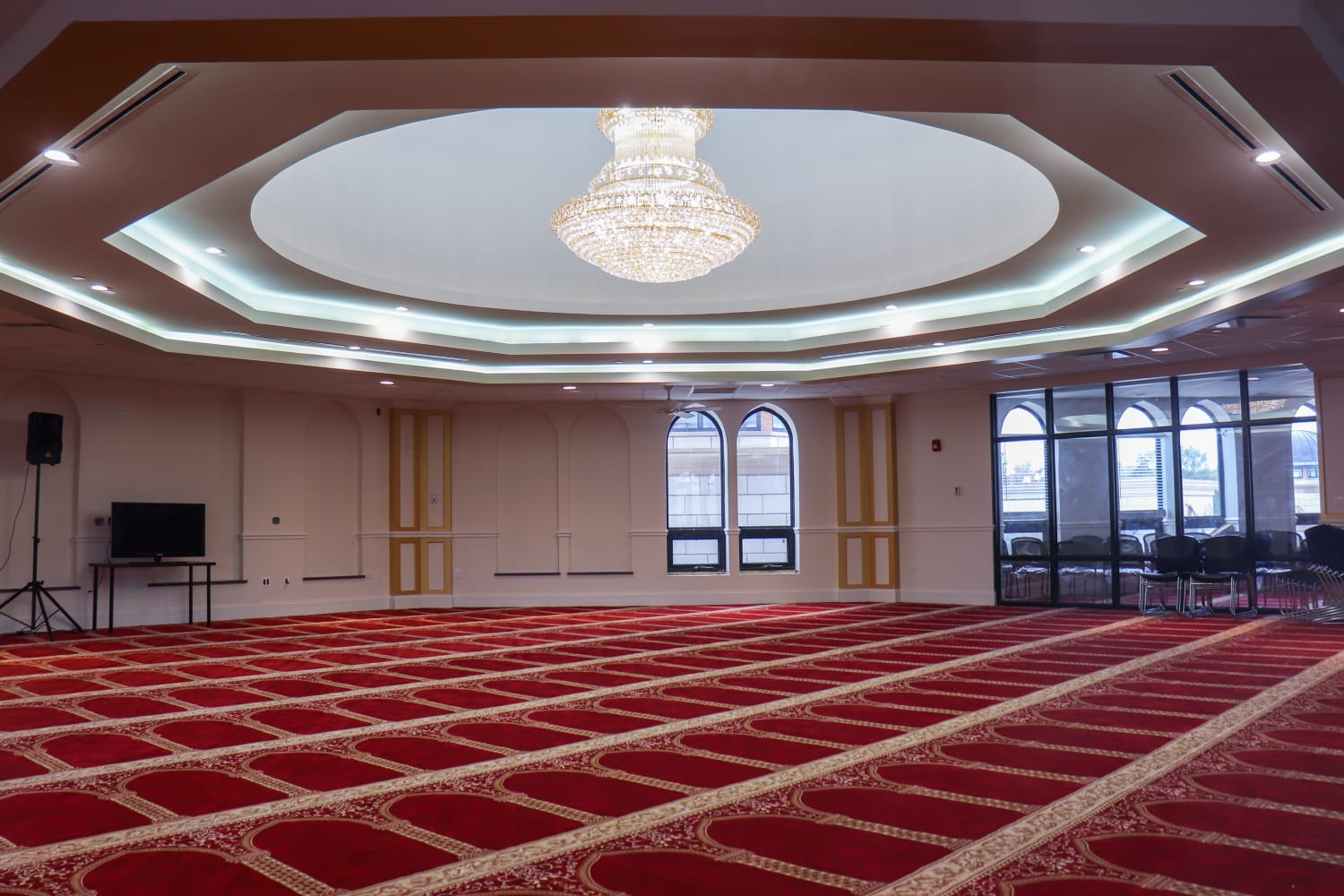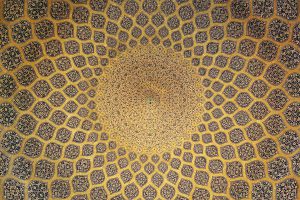Mufti Muhammad Taha Karaan (RA) on Zakah on Gold Jewelry

بسم الله الرحمن الرحيم
Question
Assalamu Alaikum
My question is pertaining to the zakat paid on gold. Do we have to pay zakat on gold that we have owned for more than a year, for every year that we own it? or only once in our life. Also does it matter if we wear the gold all the time or wear the gold once a year and only to weddings?
If it is jewelry is it exempt from being zakatable or not? please help me understand this! Jazakallahukhairan.
Mufti Taha’s Answer
In principle, zakah must be paid on gold that one has owned for a full year, not just once, but for every year that one owns it. However, if the owner of the gold is a female whose purpose in acquiring the gold is to wear it, even if it be only once a year and only to weddings, it will not be incumbent to pay zakah on it.
Answered by Shaykh Taha Karaan
—
Addendum to this Fatwa:
Someone commenting on this fatwa asked for the proofs regarding this view and Shaykh Taha expressed his approval for wanting to know the proofs for a view. He stated, “The interplay between fiqh and dalil, and maintaining the vitality of this relationship, is one of the points on which our madhhab prides itself.”
He (rahimahuAllah) responded with the following addendum to this fatwa:
—
Proof in Shari’ah lies essentially in the Qur’an, the Sunnah, ijma’ (consensus of the mujtahids of the Ummah) and qiyas (analogy).
On the matter of zakah upon permissible jewellery—
- we find nothing specific enough in the Qur’an to govern the case
- we find questions around the authenticity of the ahadith that do specifically address the case
- we find, in addition, contradiction between the existing ahadith on either side
- and we find that the matter was one on which different Sahabah held divergent views—with Sayyidah ‘A’ishah, Sayyiduna Jabir, Sayyiduna ‘Abdullah ibn ‘Umar and Sayyiduna Anad radiyaLlahu ‘anhum holding zakah upon permissible jewellery to be non-obligatory, while Sayyiduna ‘Umar and Sayyiduna ‘Abdullah ibn ‘Amr radiyaLlahu ‘anhum held the opposite view—hence no ijma’.
What remains thereafter is qiyas.
The central questions along which to probe the issue would thus be:
- Is it possible to determine which of the conflicting ahadith is stronger?
- Can the apparent contradiction be resolved?
- Where would the application of qiyas lead to?
DETERMINING AUTHENTICITY
1. THE HADITH OF JABIR
The authenticity of the hadith of Jabir which states that there is no zakah upon jewellery is questioned on two counts:
- Firstly, it contradicts a version of the hadith in which the statement comes from Jabir and not from RasuluLlah sallaLlahu `alayhi wasallam—in other words, there is a contradiction between a marfu’ version reaching up to RasuluLlah sallaLlahu `alayhi wasallam, and a mawquf version terminating at Jabir. Ibn al-Jawzi rationalises the apparent contradiction with the explanation that the mawquf version is a case of Jabir pronouncing fatwa, whereas in the marfu’ version he transmits the hadith of RasuluLlah sallaLlahu `alayhi wasallam.
- Secondly, there are questions around the reliability of the narrator responsible for the marfu’ version. This narrator, ‘Afiyah ibn Ayyub, is dismissed by Bayhaqi and Dhahabi as majhul (unknown), while Abu Zur’ah deems him passable. Ibn al-Jawzi and Mundhiri see no reason to impugn his reliability, while from the opposite side Ibn Daqiq al-‘Id places the onus of demonstrating his reliability upon those who set store by his hadith. (al-Badr al-Munir 5:569)
2. THE HADITH OF AMR IBN SHU’AYB
The hadith in which RasuluLlah sallaLlahu `alayhi wasallam instructs two women (or a woman and her daughter) to give zakah on the bangles worn by them, is transmitted by ‘Amr ibn Shu’ayb, from his father, from his grandfather. The authenticity of this hadith has been questioned on several grounds:
- Firstly, it is narrated from ‘Amr ibn Shu’ayb by two unreliable narrators: Ibn Lahi’ah, and al-Muthanna ibn al-Sabbah. Imam Tirmidhi dismissed the hadith on this basis. However, a third strand which Husayn ibn Dhakwan al-Mu’allim transmits from ‘Amr ibn Shu’ayb makes up for this deficiency.
- Secondly, there is some ambiguity concerning the “grandfather” from whom ‘Amr ibn Shu’ayb transmits. It might either be his direct grandfather Muhammad, or his great-grandfather the Sahabi ‘Abdullah ibn ‘Amr. While there might have been a measure of hesitancy with some early hadith critics on the status of this isnad, it has generally come to be accepted among the muhaddithin.
RESOLVING CONTRADICTION
The attempt to reconcile the apparent contradiction between the ahadith on this issue has involved a number of approaches:
- In one approach, which Imam Bayhaqi ascribes to a number of Shafi’i fuqaha, the ahadith that obligate payment of zakah on jewellery are placed within a time when the use of gold jewellery was prohibited. (al-Sunan al-Kubra 4:140) The hadith of Jabir would then date from a later period when gold jewellery came to be allowed.
- Ibn Hajar al-Haytami alludes to the possibility that in the specific instances where RasuluLlah sallaLlahu `alayhi wasallam ordered the giving of zakah on gold jewellery, the obligation arose not out of the jewellery being gold per se, but rather because the pieces of jewellery involved were extravagant. (When a piece of jewellery is extravagantly large, even the Shafi’i madhhab that normally deems zakah on jewellery to be non-obligatory, makes zakah obligatory.) Ibn Hajar goes on to say that this possibility appears to be borne out by some versions of the hadith. (Tuhfat al-Muhtaj 3:271)
- In a third approach the “zakah” on jewellery is interpreted, not as the normal 2.5%, but rather on the lending of it. Thus, someone who lends her jewellery to others for use has given the zakah of her jewellery. Bayhaqi narrates this approach from Ibn ‘Umar and Sa’id ibn al-Musayyab. (al-Sunan al-Kubra 4:140)
APPLYING QIYAS
In trying to ascertain the rule of zakah on gold jewellery through qiyas, there is more than one aspect to gold jewellery that might serve as the ‘illah, or ratio legis.
- Should one focus on the substance of which the jewellery is made, i.e. gold specifically, one would come to the conclusion that zakah must be paid since the general rule is that zakah has to be paid on gold.
- Alternatively, should one focus on the element of use (i.e. that the purpose of acquiring the jewellery is to use it and not hoard it), one finds a parallel with other forms of property which are acquired for use. The case of livestock acquired as beasts of burden and labour, in particular, presents an interesting parallel. Although there would normally be zakah on livestock, when they are kept for work, there is no zakah on them. A hadith to this effect has in fact been graded as authentic by experts such as Ibn al-Qattan and Ibn al-Mulaqqin. (al-Badr al-Munir 5:46 0ff)
CONCLUSION
The purpose of the above exposition was to convey an idea, not of which side holds the stronger proof, but rather of how commensurate and equally balanced the proof on either side is. It was on account of this factor that Imam Shafi’i himself said, “This is a matter on which I make istikharah (i.e. pray to Allah for guidance)”. His student Rabi’ states that he did in fact make istikharah on it. (Kitab al-Umm 2:107)
The view which eventually crystallised into the preferred position of the Shafi’i madhhab (as well as the Maliki and Hanbali madhhab) is that zakah is not payable on jewellery that is kept for use. However, there are a number of factors which add weight to the opposite position.
- Firstly, in the final analysis the ahadith that obligate zakah on jewellery would appear to have the advantage, in the sense of technical authenticity, over the other ahadith.
- Secondly, the attempts at reconciliation remain, by and large, possibilities.
- And lastly, in matters of such commensurate ikhtilaf, erring on the side of caution is something which is strongly advised by the ‘ulama.
The case of zakah on jewellery is probably one of the most deserving instances of doing what the scholars call “avoiding khilaf”—a term used to described the practice whereby a follower of a particular madhhab adopts the view of another madhhab which happens to be stricter than his own madhhab on the particular point. This “avoidance of khilaf” is motivated by the consideration that the position of the other madhhab might in fact be the correct one. Leaving the bounds of one’s madhhab in order to practice upon the stricter view of another madhhab is not only permissible as Imam Taqi al-Din al-Subki states in Fatawa, but laudable as well.
Thus, should a conscientious Shafi’i decide to adopt the Hanafi madhhab’s perspective on this point, his decision would be most worthy of praise. This is what I would personally advise.
And Allah knows best.


